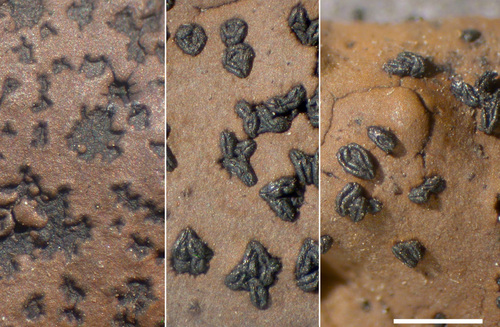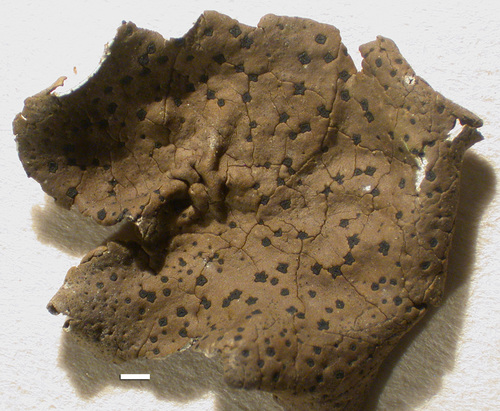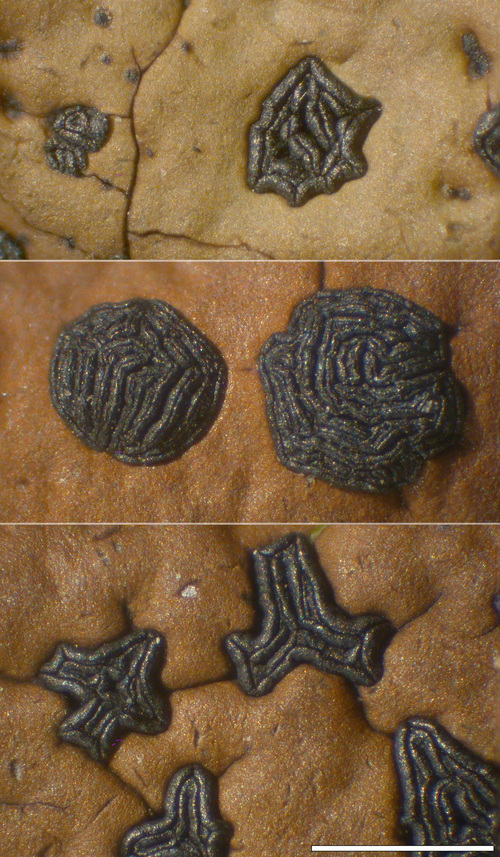Click on Characteristic name for explanation. Click on image for larger version.
|
Umbilicaria phaea
| Overview
| | PNW Range: | | | West side | Common
| | East side | Common
| | Immediate coast | Rare
| | Alpine or subalpine | Common
| | Habitat: | Exposed to somewhat shaded rock outcrops and talus, common at low to mid elevations, less frequent at high elevations.
| | Substrate: | Rock (noncalcareous).
| | Comments: |
| | Synonymy: | none
|
|

Apothecia
by B. McCune
1/8

Upper surface
by B. McCune
4/8

Apothecia
by B. McCune
7/8
Scale: Bar=1mm unless noted
|
|
|
|
|